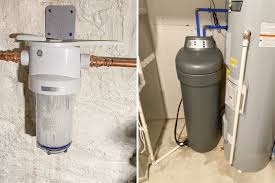Characteristics of Textile Sublimation

Characteristics of Textile Sublimation. Sublimation printing is a popular printing method that aims to transfer a design from sublimation paper to a piece of fabric or material through the use of pressure and heat. Using this process to change the solid particles in ink to a gaseous state is an easy and cost-effective way to add personalization to products use by both businesses and individuals at home.
Compare to other digital printing processes, dye-sublimation is a much faster and easier process that can provide a pleasant and cost-effective solution to your business.
Types of Textile Printing
There are different methods of fabric printing and they all produce different results. The type of textile printing you decide to use is often base on a list of customer considerations.
1. Transfer Printing
It is a specialize paper but it is very accessible since it can be bought in most stationers and even in some supermarkets. You can use a standard home printer to print your design onto the transfer paper, which you can then print onto your chosen fabric using a standard iron. While the result can be much better professionally, the print will always leave a glossy film or surface texture on the fabric. This is not a permanent method of textile printing as it can crack or peel with multiple washes and often fade.
The transfer printing temperature using a heated belt to produce durable images on a wide variety of materials. No ribbon is used in direct thermal printing , which creates the image directly on the printed material.

2. Silkscreen
Screen printing is one of the most common printing techniques in the business. This printing method uses a template and a stretch mesh to create the print layout. A waterproof material will be use to block the spaces where you want your design to appear, and then in those block spaces the ink will be place. Due to the way this method is carry out, only one color can be use for each display.

3. Textile Cutting Vinyl
With a process similar to transfer printing, cutting vinyl is a good option to print garments in a short time and at a low cost. These are simple vectorize designs in a single color. That design is then sent to a plotter that cuts out the shape of the design from vinyl. Vinyl is of a certain color on one side and an adhesive material on the other. Finally, it is iron on the garment so that the vinyl remains glue to the surface and the design is transfer.

4. Textile Sublimation
It is the process that produces the best results of all fabric printing methods. The designs are print on a paper known as sublimation paper. Both heat and pressure are use to permanently bond the inks to the fibers of the fabric. This leaves the fabric as smooth as it was before printing.

Why choose Textile Sublimation?
Dye sublimation is considere the best process for printing everything relate to textiles. This is because the gaseous state of the ink results in a smooth, fully washable image that is fully embed in the material. Also, the quality is high resolution consisting of vivid and vibrant colors.
Advantages and Benefits of Textile Sublimation
1. Quick Process
The modern sublimation process saves much more time compare to conventional methods. You create an image on your computer, print it on special transfer paper using sublimation inks, and then apply the design using a heat press. The entire process can take less than 20 minutes from design to production.

2. Quality Textile Printing
The sublimation Printer in Pakistan result results in vibrant, high-resolution images. And because ink is not apply to individual dots, as in other printing processes, secondary tint graphics have smooth color variations. In addition, because the ink chemically adheres to the material, it does not scratch or scratch the surface and remains permanently.
3. Reflection-free printing
Fabrics print using the dye sublimation process use for your graphic printing can absorb light and is able to prevent reflections from appearing in your graphics. This ensures that the graphics on your textiles are clearly without any distortion unlike other conventional methods.
4. Economic Service
Dye-sublimated print textiles are much lighter compared to traditional rigid materials, making it easily transportable. The reduced weights result in lower shipping costs compare to other printing processes. Plus, sublimated fabrics can be fold, allowing you to use less storage space.



